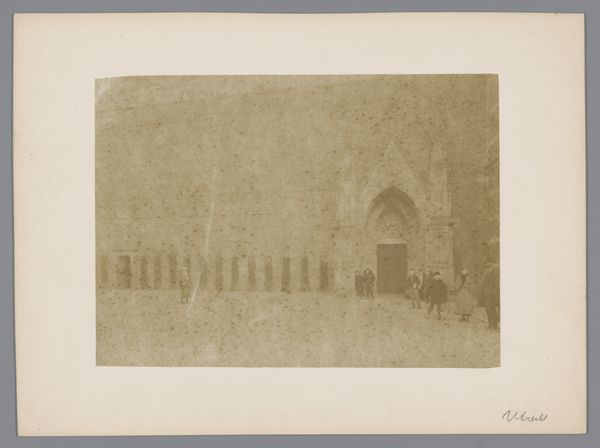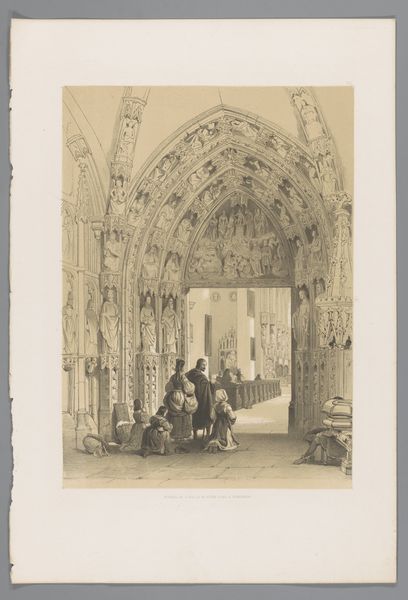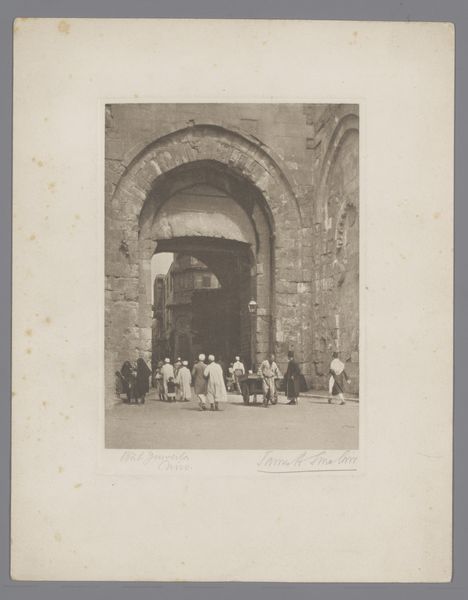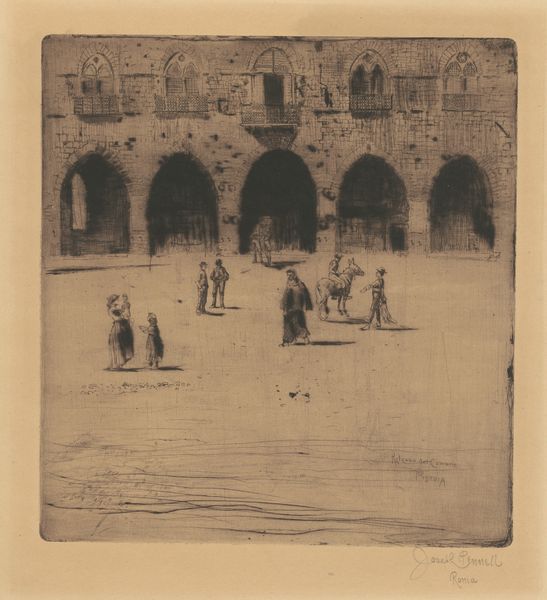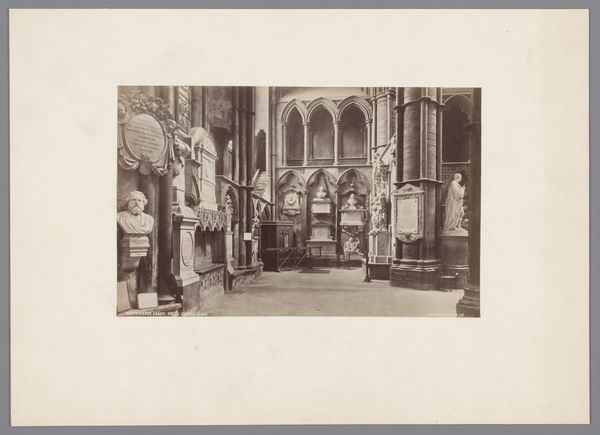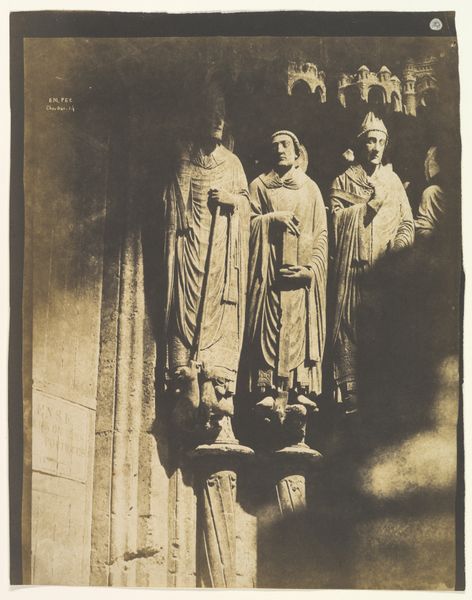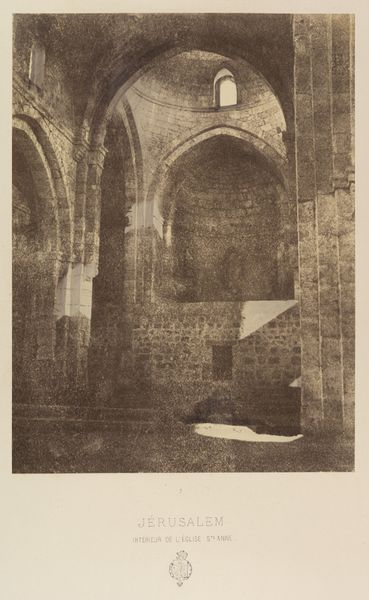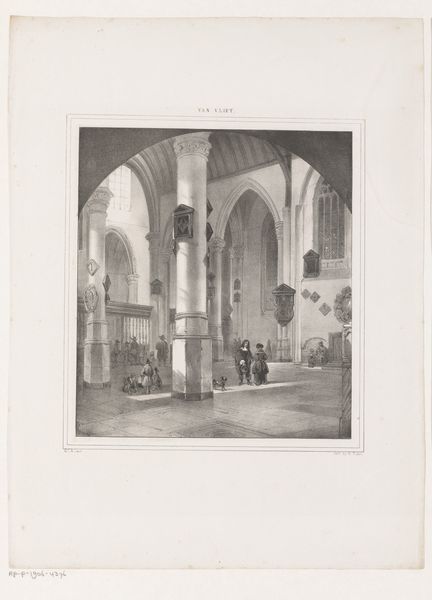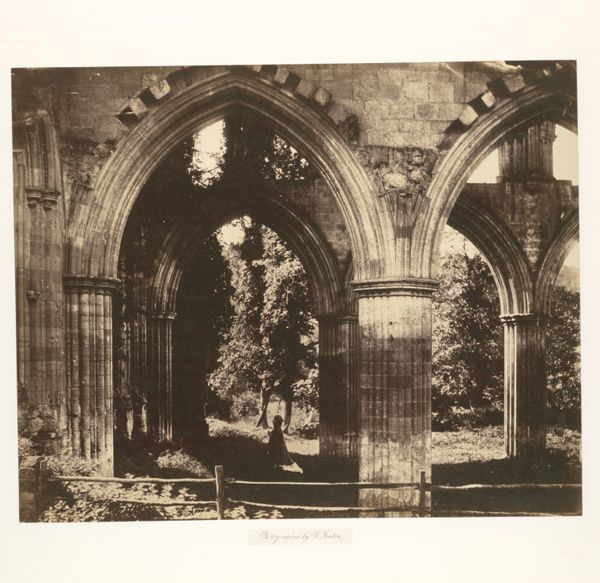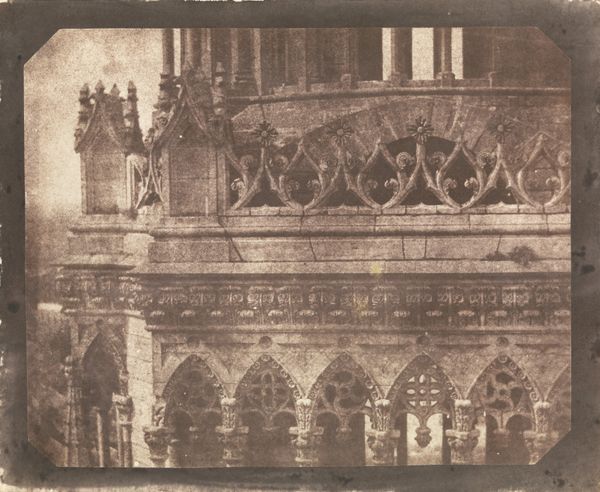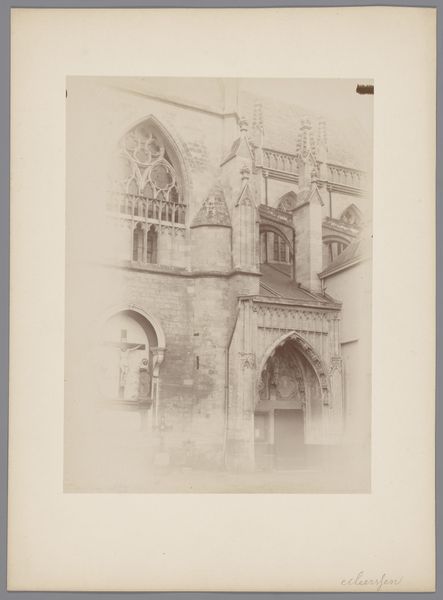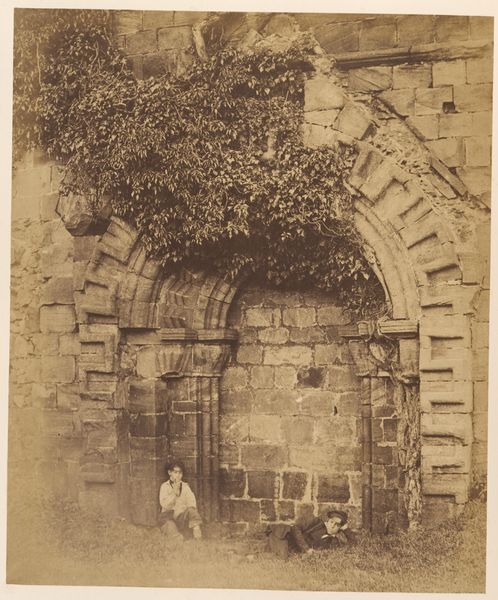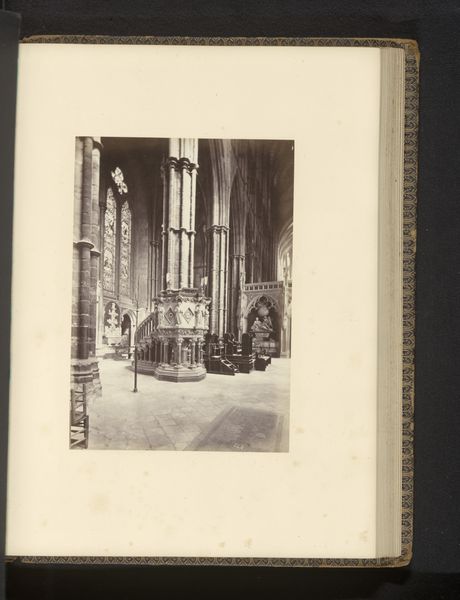
photography, gelatin-silver-print, architecture
#
portrait
#
landscape
#
photography
#
gelatin-silver-print
#
19th century
#
men
#
architecture
#
realism
Dimensions: Image: 10 3/8 × 8 1/8 in. (26.4 × 20.7 cm)
Copyright: Public Domain
Curator: Pierre Emile Joseph Pécarrère captured this gelatin-silver print, entitled "Bourges," sometime between 1850 and 1852. Editor: Wow, what strikes me immediately is this sense of quiet melancholy. The way those figures huddle beneath the grand architecture...it’s as if the stone is a silent witness to something somber. Curator: Yes, there’s a palpable weight to it. Note how Pécarrère uses the Gothic architecture, not just as a backdrop, but almost as a character in itself. Those arches echo above the figures, perhaps representing both refuge and confinement. Editor: Refuge, definitely. But confinement too. The photograph creates a narrative—a sort of street scene freeze-framed with a beautifully ornate stage. I can almost hear them whispering secrets to the stonework. And that soft, muted palette really reinforces this idea of timelessness. It reminds me of an old daguerreotype. Curator: Exactly! Pécarrère’s use of realism really contrasts against this. His capture feels honest and unvarnished, yet there's symbolism baked into every layer. Those cloaked figures could be archetypes of society or faith or any aspect of it. The presence of men, the way the setting contrasts against their poses: it all tells stories, you know. Editor: Definitely. Look at the men’s clothes—are they beggars? Laborers resting? They look lost and almost forgotten at the same time. I think the scale reinforces the notion that everyone passes, yet we never forget. The architecture lasts. How crazy is that? Curator: The interplay between ephemerality and permanence is definitely one of the key symbolic axes. This also gets us to ideas of loss, of history’s persistent echo. Editor: It feels incredibly relevant, actually. In the digital whirlwind we all navigate now, it’s calming to look back at scenes that capture such enduring qualities of being human—resting and being watched by stone giants that outlive all of us. Curator: Absolutely, seeing across eras that human element allows us to engage with its core essence while thinking, simultaneously, of cultural continuities across vast gulfs of time. Editor: You know, after looking at it, this photography piece now leaves me feeling that there are some common qualities amongst different walks of people from history; it's all incredibly equalizing.
Comments
No comments
Be the first to comment and join the conversation on the ultimate creative platform.

